Part of the mission of Moremen Moloney Contemporary Gallery in Louisville, Kentucky is to bring forth intellectually challenging work which addresses relevant issues and concepts in a manner that is both provocative and accessible. With Yvonne Petkus’s Witness: Bosnian-influenced Paintings, visitors are met with images that resonate, largely due to striking, straightforward representations of the enduring impact of the Bosnian War and sociopolitical conflict in the Balkan region. Through a combination of subject matter and visual redundancy, Petkus provides a somber reminder of the ways in which identity and place are affected by warfare.
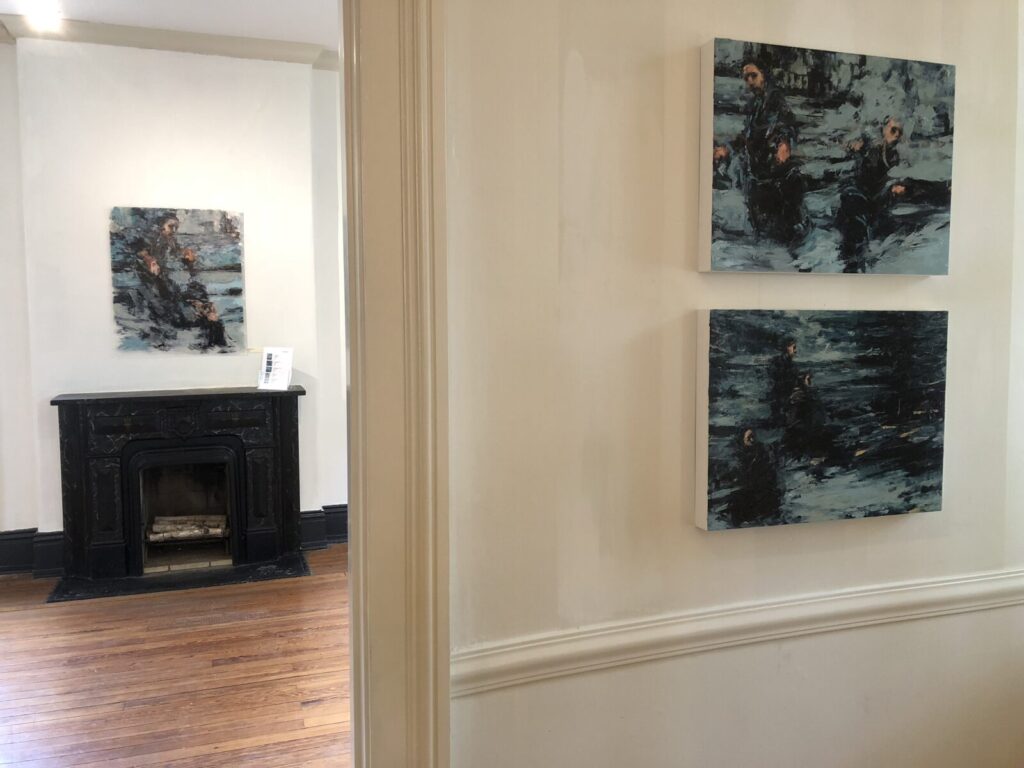
Petkus’s work in Witness follows the artist’s immersive study of and living in Bosnia and Herzegovina during spring 2017. Upon being granted a fellowship through the Zuheir Sofia Endowed International Faculty Seminar program at Western Kentucky University (where the artist teaches), Petkus travelled to the Bosnian region last May. In her statement for Witness, she describes the opportunity as “intense, beautiful, emotional, at some times difficult, and at all times supremely interesting and inspiring.” The resulting exhibition is a visual extension of the internalities she also expresses in writing.
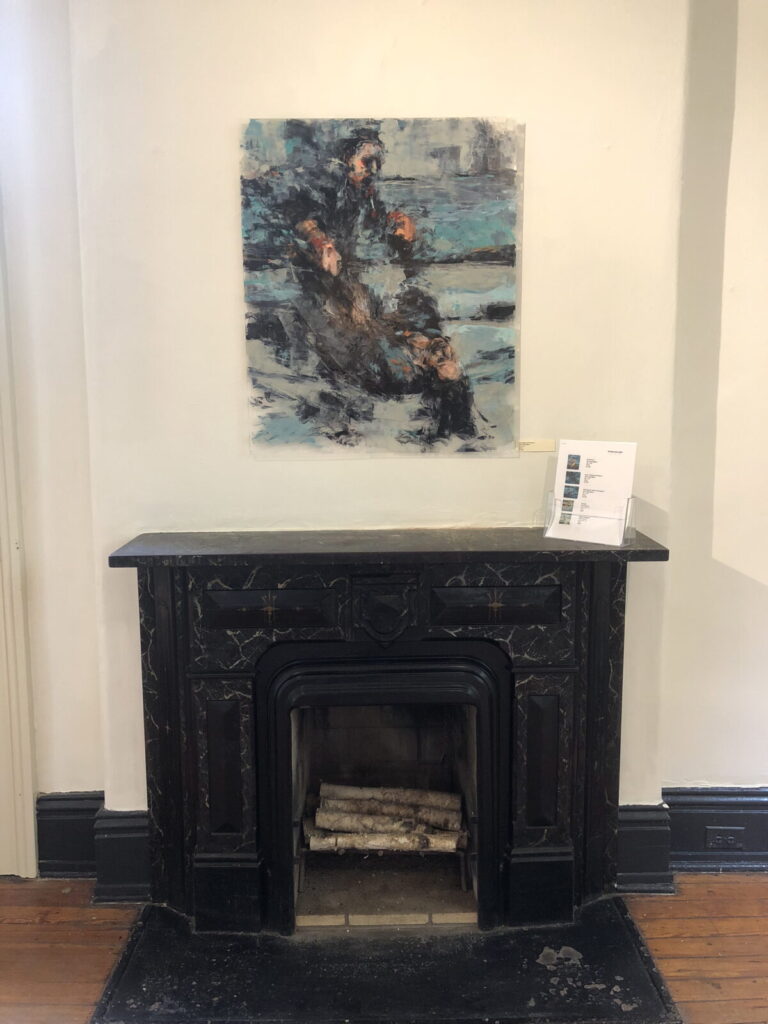
Witness contains fifteen oil paintings, rendered on either plexiglass or board, dispersed throughout three rooms. The material on which each image is amassed affects the quality of how it is seen: for example, small areas of untouched plexiglass function as apertures exposing the wall behind a work to reveal shadows cast by the paint itself, simultaneously emitting backlight that often contributes to a painting’s ocular depth. Petkus’s application of paint is expressive, and the resulting surfaces are—save for the uncovered segments of plexiglass—dense and active, possibly reflective of an artist and creative stimulant that are both unsettled. The inherencies of Moremen Moloney, as a house-turned-gallery space, encourage viewers to imagine living with the work in their own homes, a sentiment apparent in the display of Raw (Siege of Sarajevo) (2018) over the mantelpiece.
Every painting in Witness features at least one specific figure: a nude woman with long dark hair and apricot colored skin splotched with deep reds, typically with mouth agape, and showing obvious indications of distress and exhaustion. The repetition of the woman, in addition to the blue atmospheric background she normally appears within, generates a sense of narrative throughout the exhibition and this particular body of work.
It cannot be assumed that these are self-portraits, though they do transmit a kind of personal affiliation Petkus has with the figure she construes. Raw (Siege of Sarajevo) contains the figure in double; the painted woman locks hands with, and seemingly calls out to, another. The scene suggests the two are attempting to pull their counterpart nearer, as if both are in need of saving. The women, despite their hand-in-hand connectedness, are largely removed from each other. As an output of Petkus’s research and study, Raw (Siege of Sarajevo), titled after a prominent event of the Bosnian War, captures the intensity of the siege itself as well as the legacy of the communal trauma it spurred.
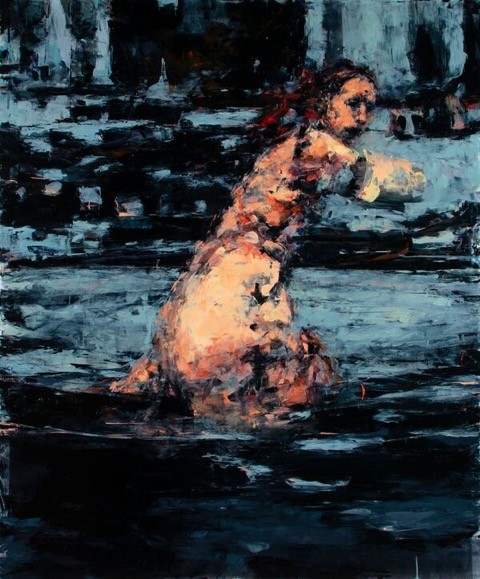
Throughout the exhibition, the figure is in some state of incompletion. For instance, in Caught (2017), a woman stands in an unknowable substance, turning her back toward the viewer and reaching outward from her left side. Except her arm dissolves, or rather, is consumed by the surrounding area. The woman looks over her shoulder, but offers no gaze towards the viewer—her eye sockets are deep cavities. Caught evokes Petkus’s perception of the degree to which local history resonates in present-day Bosnia and Herzegovina. Here, the woman is a metaphor for the artist’s own interactions with the region and people who inhabit it.
Notions of distress are embodied in the woman Petkus portrays, enhanced by the characteristics of the locations the woman is placed within. Petkus, at most, will afford viewers with just enough directional contours or value shifts to indicate depth, but more frequently paints the figure amongst a sea of indeterminate objects and forms.
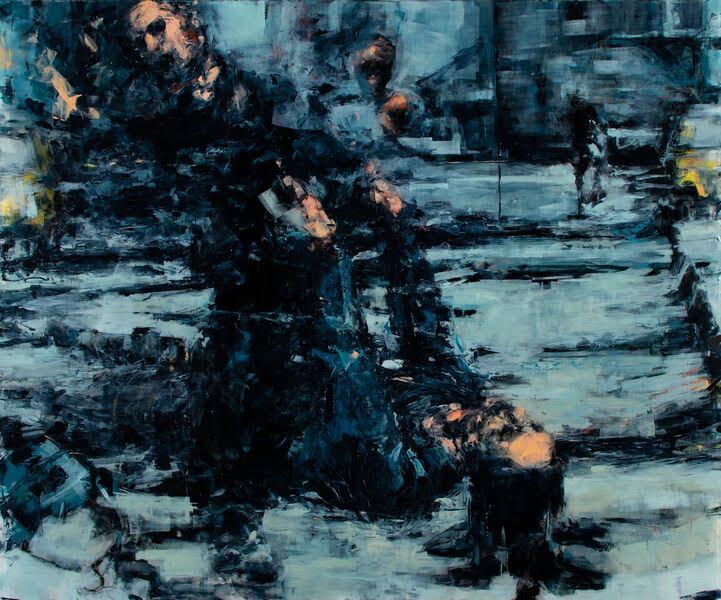
Raw II (Siege of Sarajevo) (2018) is a case of the former. Like the previously mentioned Raw (Siege of Sarajevo), this second iteration holding allusions to the siege of the Bosnian capital features two women joined at the hands, pulling the other in anguish. In the distance, the pretense of another figure, standing and facing away from the women, can be seen amongst impressions of architectural structures. Yet these components are minimal, and could just as well be interpreted as abstracted shapes. Petkus is sure not to give too much away—these faint gestures retain a sense of uncertainty, as if they are memories of the women in the foreground, remnants of their shared pasts.
Witness is, in addition to being a record of lingering feelings of political upheaval Petkus sensed during her Fellowship, a trial of the viewer’s endurance. Indeed, just as Petkus marks the pervasive aftermath of the Bosnian War, the exhibition at Moremen Moloney, through the persistence of a specific figure and locality she occupies, may fatigue viewers with recurring palettes and forms.
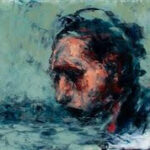
Petkus intends for this, surely. Witness (2018), the inclusion possessing the same name as the exhibition itself, not only stands as an emblem of Petkus’s observations, it is a reminder that the viewer is also under scrutiny. Witness is one of few up-close portraits in the exhibition, presenting the same women as before in a more intimate fashion. She watches visitors to Moremen Moloney, waiting for them to experience the same sensations of depletion she feels. As she travels from painting to painting, her fatigue evolves, at times accompanied by others.
By describing the struggles of others, the artist prompts viewers to recall their own harrowing encounters. In Witness: Bosnian-influenced Paintings, Yvonne Petkus employs a lively handling of paint to both illuminate an aftermath of violence and contest viewers’ own perceptive capabilities. While her paintings may only reflect a portion of the condition of the Bosnian region, they are testaments to collective struggle and, eventually, restoration.




